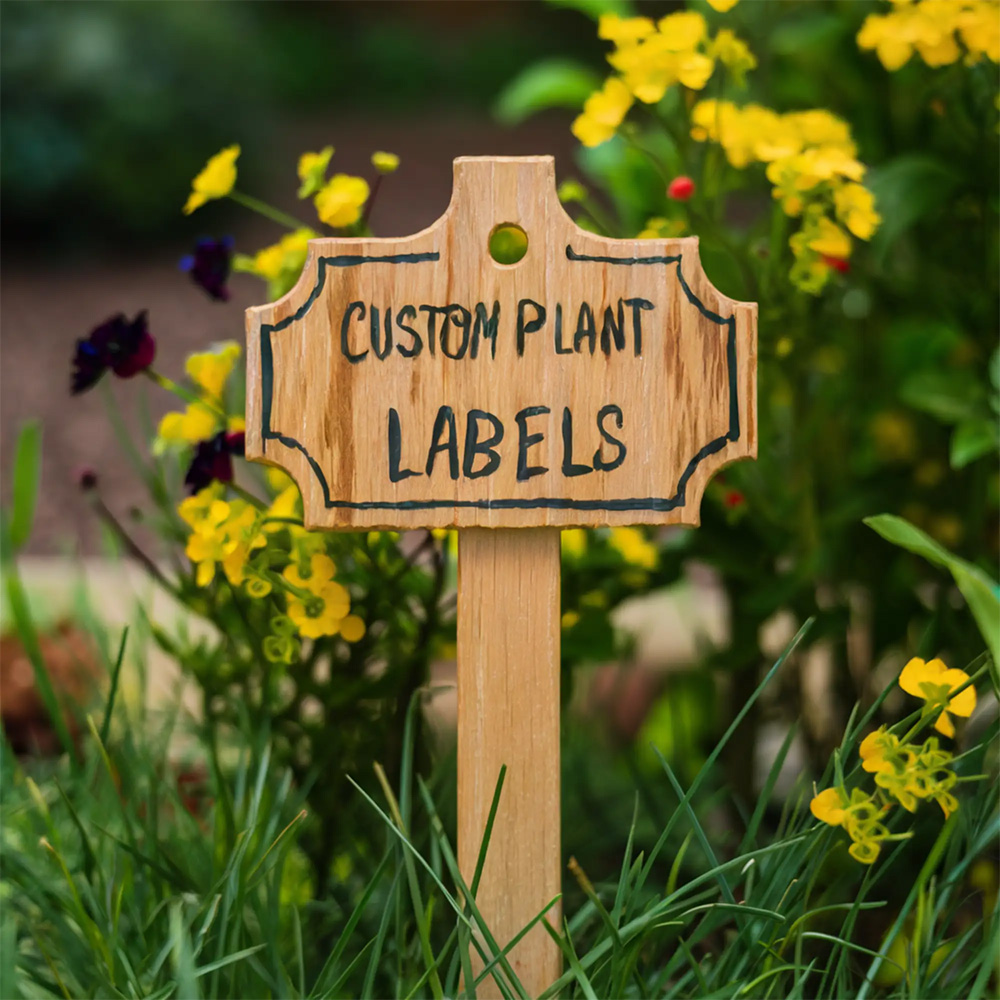
Get the latest information on plant labels and enhance your garden with our stylish, tailored solutions.
This guide will help you decode plant tags, explaining key details such as names, size, light, and water requirements, making it easier to apply the best care techniques for your garden.
The front of a plant tag typically displays both the plant’s common name and its scientific name. Often, there is a photo of the mature plant to help with identification. The scientific name, usually printed in italics under the common name, is essential for accurately identifying specific species or varieties, especially when shopping for similar plants in the same family.
Plant tags offer details about the plant’s mature size, which is helpful for planning the layout of your garden.
The tag indicates the full-grown height of the plant, listed as a range to show both the minimum and maximum average height. This helps ensure proper placement in your garden design.
The spread shows how wide the plant will grow once mature. This is important for determining how much space to leave between plants to prevent overcrowding.
The growth habit, or the way the plant naturally grows (e.g., mounding, trailing, upright), is indicated on the label. Knowing the habit allows you to select plants that complement the overall shape and style of your garden.
Proper spacing is essential for plant health, and plant tags provide guidelines to avoid stunted growth. If spread information is missing, you can use the spacing suggestion as a general guide.
Sun icons on plant tags indicate the plant’s light requirements. These icons represent different levels of sun exposure that plants need to thrive, generally divided into three categories:
Represented by a full sun icon, this means the plant requires at least 6 to 8 hours of direct sunlight each day.
A half-shaded sun icon means the plant needs 4 to 6 hours of sunlight per day, usually in the morning or late afternoon.
A completely shaded sun icon suggests the plant prefers less than 3 hours of direct sunlight and thrives in indirect or dappled light.
Water requirements are often displayed as raindrop icons or described directly on the plant tag. Understanding these symbols ensures your plants receive the proper hydration.
One raindrop symbol means the plant prefers its soil to dry out completely between waterings.
Two raindrops suggest that the plant’s soil should remain moist, but the top inch can dry out between waterings.
Three raindrops indicate the plant thrives in consistently moist soil, requiring frequent watering. However, avoid overwatering that causes pooling.
Many plant tags provide fertilization guidelines, explaining how often to feed the plant to promote healthy growth. If this section is not present, it’s important to research the plant’s specific nutritional needs. Annuals, for example, often require more frequent fertilization than perennials to maintain vigorous growth.
On the back of the plant tag, you’ll often find care instructions and special features that highlight the plant’s unique needs. This may include tips on drought resistance, heat tolerance, or wildlife interactions, such as whether the plant attracts pollinators or deters pests. Detailed plant tags can provide all the information needed to keep your plants healthy without additional research.
Learning how to interpret plant tags is key to successful gardening. These tags offer valuable insights into everything from sunlight and water needs to plant spacing and fertilization, helping you make informed decisions for your garden. By keeping plant tags for future reference, you’ll have a useful resource at hand to ensure your plants thrive for years to come.
Get the latest information on plant labels and enhance your garden with our stylish, tailored solutions.
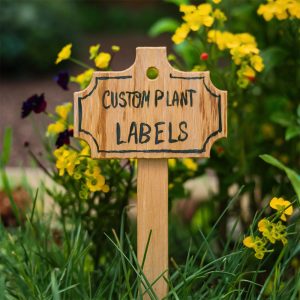
Are you tired of forgetting which plants are which in your garden? Plant labels are the unsung heroes of garden organization, helping both novice gardeners and experienced botanists keep track of their green companions.
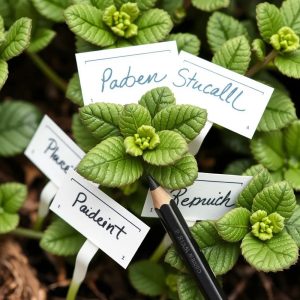
Gardening enthusiasts often find themselves faced with the challenge of labeling their plants in a way that is both durable and legible. The pencil you use plays a significant role in ensuring your garden labels can withstand the elements and stay readable over time.
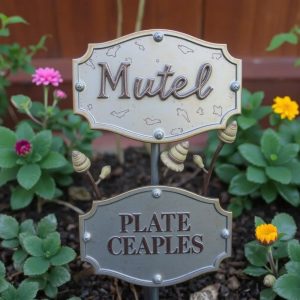
Metal garden decor, including metal plant labels, adds elegance and sophistication to any outdoor space, enhancing its overall aesthetic appeal. However, rust can quickly undermine the beauty and structural integrity of these decorative pieces.
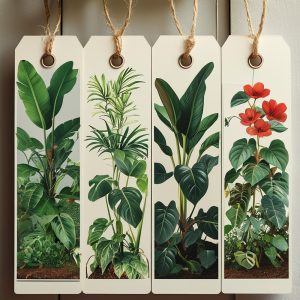
Plant labels play a crucial role in gardening, whether you’re a novice looking to keep track of your new plants or an experienced botanist identifying and categorizing species.
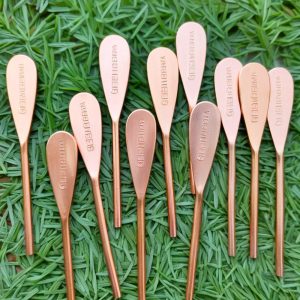
Copper plant markers are an excellent choice for gardeners who want a durable and aesthetically pleasing way to label their plants.
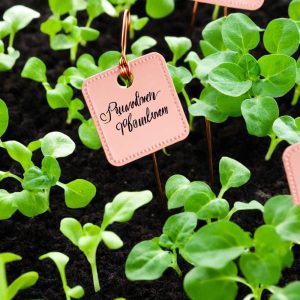
When it comes to writing on metal, enamel paint is a top choice specifically designed for this purpose.
Fill out the form below, and we will be in touch shortly.